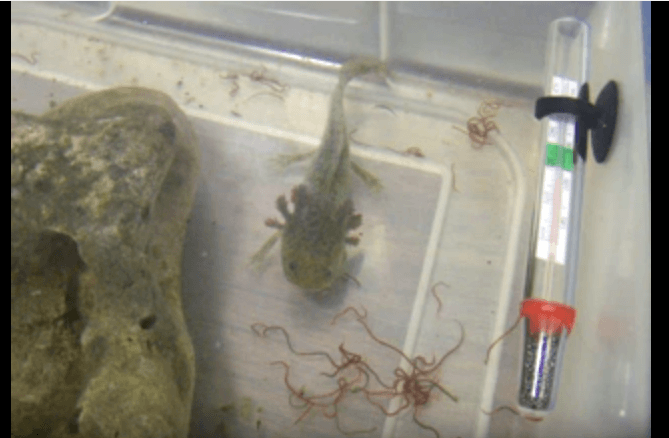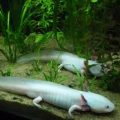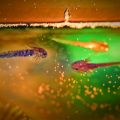Table of Contents
If you’re willing to change the water of your axolotl tank frequently; around 20% of water every week the, you don’t need filtration. Obviously, axolotl owners use water filter to keep their axolotl tank clean and conducive for the axolotl to live. In this entry, we will talk more of how axolotls excrete their waste; and what makes a good water filtration system for axolotl tanks.
There are lots of good filter options for axolotl tanks, namely internal power filter, under-gravel filter, external filter (which you need to hang on the tank); and the canister filter. The last one provides the best filtration for axolotls, but it is also the most expensive.
Axolotls Excrete Waste, A Lot
Axolotls excrete tons of waste, on a daily basis. Their waste is in the form of NH3 (ammonia), which is a very toxic substance in unionized form. But this is in constant balance with the ionized form (NH4+), and through nitrification; this harmful substance is converted to a less harmful form called nitrite (NO2-). Then, other bacteria will convert it to benign form, which is nitrate (NO3-). Both processes are very important aspects of biological filtration.
Nitrate is the source of fixed nitrogen (Nitrogen gas), which is important for plants and fungi. If you have live plants in your aquarium, the plants will consume the nitrate generated by the filtration system.
Choosing the Right Filter
The size of the filter must be right with the size of the tank. You can’t use large water filter on a small tank; as it will cause strong water current and stress the axolotls. Ideally, we want to mimic the water environment of the river, but there should be a good actual water turnover through the filter; as not enough “biological filtration” can also be bad.
Preparing the Tank
Before you put your axolotl to the tank, make sure you “age” the water on the tank. This means, leaving the water for a couple of weeks or so. Then, install the filter before you put your axolotl. Putting one small axolotl can affect the water, and promote the development of bacteria in the filter system; which is beneficial for the biological filtration.
Obviously, your water should be de-chlorinated. You can use an aquarium dechlorinator; or simply leave the water on the tank for several days, around two weeks or so.
The water on your tank must be cleaned on a regular basis. Experts recommend changing around 10% to 20% of the water volume once a week, depending on how many axolotls you have on the tank.
Lastly, it is very important to remove any unfiltered waste and uneaten food every after feeding time of your axolotl, or twice a week. You can use a siphon to easily suck out waste or uneaten food.






 Author and long-time animal lover. Sharing knowledge on pet care through experience and the written word.
Author and long-time animal lover. Sharing knowledge on pet care through experience and the written word.